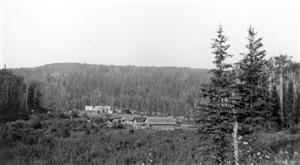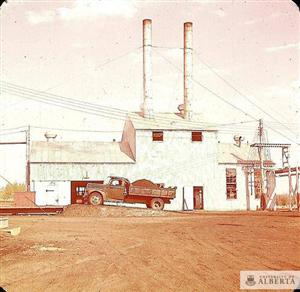History of the Oil Sands
Although the oil sands of Alberta have only been developed commercially since the late 1960s, their documented history dates back nearly three centuries to 1717, when Waupisoo of the Cree people brought samples of the oil sands to the Hudson’s Bay Company trading post at Fort Churchill (ERCB 2008b). Decades later, Peter Pond documented the oil sands at the confluence of the Clearwater River and the Athabasca, and in 1790 the oil sands region was visited and described by the European explorer, Sir Alexander Mackenzie.
In 1875, a Geological Survey of Canada (GSC) expedition into the area allowed John Macoun, a botanist, to note that water washed the oil out of the oil sands. Seven years later, Robert Bell headed a second GSC survey in the area. Bell was the first to recognize that there was a potentially valuable petroleum resource in the area, and gave samples to a chemist named G. Christian Hoffman, who was successful in separating bitumen from the oil sands using water. Bell believed that there must be large reservoirs of oil deep under the ground, and that drilling would be required to extract it (Ferguson 1952). Based on Bell's view, 24 wells were drilled between 1906 and 1917 to locate the ‘pools’—with no success.
During this period, experiments using the oil sands for road surfacing were conducted by Sidney Ells, an engineer with the mining branch of the GSC. Ells also found a company in California capable of extracting bitumen from sand using hot water (ERCB 2008), and conducted several experiments with the hot water flotation method.
During and after World War 1 (1914-1918), Canada became increasingly aware that it was almost entirely dependent on foreign oil. This produced a sudden interest in discovering the nation’s oil resources. After World War 1, the Alberta Research Council (ARC) was formed by the provincial government to support oil sands research, among other projects. In the 1920s, an ARC scientist named Dr. Karl Clark developed a hot water flotation method that involved mixing oil sands with hot water and aerating the resulting slurry, which led to separation of bitumen froth from the sand. A field-scale oil sands separation plant, based on Dr. Clark’s design, was built near Fort McMurray in 1924. In 1928, Dr. Clark and his associate Sidney M. Blair were awarded a Canadian patent for the hot-water extraction process, a process still used today (Syncrude 2006).
The first commercial sale of bitumen from the oil sands occurred in 1930. Robert Fitzsimmons had constructed a small hot-water separation plant, based on the design of Dr. Karl Clark’s experimental plant, on the Bitumount site, and produced about 300 barrels of bitumen with a seven-man crew during the summer of 1930. After a series of owners and financial problems, the Bitumount site was taken over by the provincial government in 1948. While the site was eventually closed because the government was not interested in a commercial venture, data collected during the brief period of operation was used to evaluate the commercial viability of the oil sands. In 1950, the provincial government announced that it was indeed a viable undertaking.
The beginning of modern-day commercial oil sands development began in 1953, when the Great Canadian Oil Sands consortium—which would become Suncor Inc. in 1979—was formed. Construction of the Great Canadian Oil sands plant began in 1964, and production began in 1967. The Syncrude consortium was formed in 1964, with an initial objective of researching the economic and technical feasibility of mining oil from the Athabasca oil sands (Syncrude 2006). Construction of the Mildred Lake facility began in 1973, and the first barrel was shipped in 1978.
Imperial Oil began production at the first commercial in situ project, in Cold Lake, in 1985, with production exceeding 140,000 barrels per day by 1989. Before that time, natural gas liquids and their byproducts dominated production; Imperial Oil was largely responsible for increasing the production of bitumen five-fold from 1984 to 1996.
Other companies or consortiums that have joined the Alberta oil sands boom, and that are now members of RAMP, include: Albian Sands Energy Inc., Shell Canada Limited, Canadian Natural Resources Limited, Petro‑Canada Oil and Gas, OPTI Canada Inc., Nexen Inc., Husky Energy, Total E&P Canada Ltd., and Birch Mountain Resources Ltd. Through projects developed by these and other companies, bitumen production from the oil sands reached 1.255 million bpd in 2006 (AEUB 2007).










